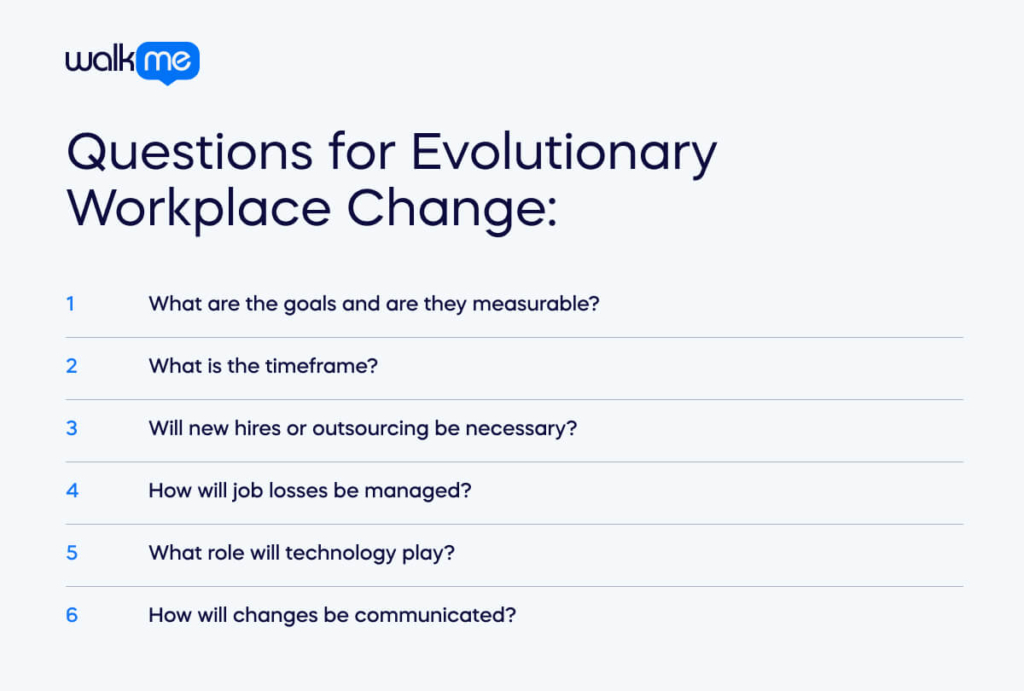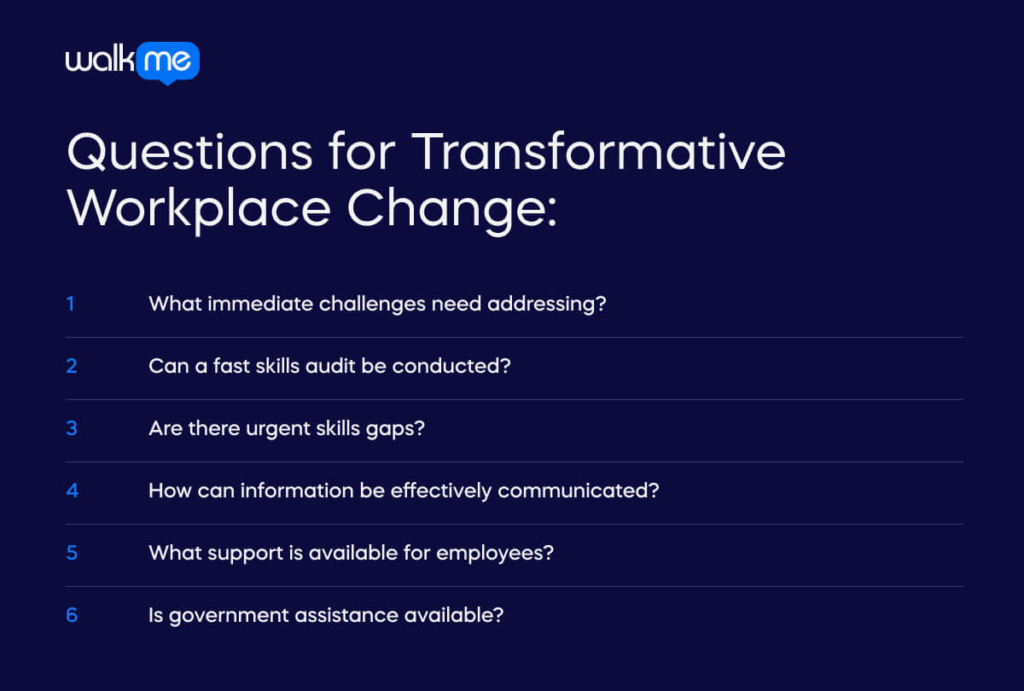Different workplaces approach change in different ways. Ideally, any organizational change process is strategic, well considered and managed carefully. All relevant stakeholders should be informed at every step of the way because poor communication can alienate people and be the downfall of truly powerful change.
It is important to look at how your workplace change process is taking place. Where does your organization stand on the evolution vs transformation debate? When it comes to evolution vs transformation, is one process better than the other? Furthermore, before embarking on a change process, are you certain you are not merely making change for change’s sake? Are you willing to show best-practice change leadership?
Definitions of evolution vs transformation
First, it is important to have clear definitions of evolution and transformation. Here, it can be helpful and instructive to turn to the world of language. If we are to consider evolution and transformation as nouns, evolution is the process of accumulating change, while transformation is the act of transforming or the state of being transformed. In this context, evolution is a more gradual process, whereas transformation is more dramatic, potentially a much faster process.
Evolutionary workplace change
Evolutionary workplace change, as the name suggests, is a gradual process. It is not about overnight change or making radical –or even particularly fast – decisions. It is a more considered process with a series of workplace goals that are met over an extended period of time.
An evolutionary process for workplace change can be a gentle, less threatening way to find new ways to be more efficient, use the skills of your employees more effectively, introduce exciting new technologies, such as automation, and restructure your workplace.
As is the case with any workplace change project, the evolutionary approach still needs careful strategic planning to ensure all goals are met along the way. It is important for employers to ask themselves a series of searching questions before starting this process, so everyone involved has a clear sense of purpose and a feeling of involvement and ownership. These questions need to be answered honestly, with consultation among the management team. Depending on labor laws in your region, you may need to involve workers’ unions, especially if job losses may be a part of this process.
Questions that an employer might ask before embarking on evolutionary workplace change might include, but are not necessarily limited to, the following:

- What are you hoping to achieve from this change process?
- What sort of goals will you be setting along the way?
- Are these goals measurable?
- Do you have a timeframe for the entire change management process?
- Will the process involve hiring new people?
- What is your recruitment strategy for new hires?
- Are there any roles or functions that could be outsourced rather than hiring more staff?
- Will the process involve any job losses?
- If so, how will these be managed?
- If redundancies, voluntary or otherwise, will be involved, has this been properly budgeted?
- If a company restructure is planned, what do you hope to achieve by doing this?
- What role will technology and digital transformation play in the change process?
- If new technology is being introduced, have you budgeted for training?
- How will you be communicating the change process to employees?
- What scope will employees have to ask questions, share concerns, or voice opinions on the change management process?
If an evolutionary change process is the way forward for your organization, it is important to do it in a constructive and strategic way.
Transformative workplace change
Sometimes, there simply is not the luxury of time for evolutionary workplace change. Circumstances, often beyond the control of an organization, can create the need for transformation in the workplace at a much faster pace. Here, workplace change can feel like a revolution rather than an evolution.
The Covid-19 pandemic is an excellent example of how workplaces across the world had to make fast decisions to ensure they survived the upheaval of lockdowns, slowed business, supply chain chaos, staff illness, and challenging trading conditions, the likes of which none of us had experienced in our lifetimes. Businesses around the world had to adjust very quickly and the support from governments varied significantly.
Debate continues as to what level of support governments should have provided during the harshest of the pandemic-related lockdowns, as well as what support is required to help businesses recover. Kayla McEwan, strategic analyst at customs compliance specialist TecEx, urges better communication between government and business across all sectors going forward: “Governments need to coordinate better with sector leaders and businesses to strategically plan for long-term solutions and determine where the government can intervene in severely affected industries by appointing expert advisors.”
But the harsh reality is that events or circumstances can force organizations to make change at a much faster pace than they ever intended or planned for, so it is important to manage a transformative change process with the same strategic approach as an evolutionary change project. The main difference is the sheer speed with which transformative change may need to be managed.
Prioritizing is important when an organization needs a revolution rather than an evolution. Like evolutionary change, it is important for company leaders to pause and ask tough questions about how to best cope with rapid or unexpected change. Resilience will become important.
Questions that an employer might ask before embarking on a transformative change process might include, but are not necessarily limited to, the following:

- What are the most immediate challenges we need to deal with?
- Can we conduct a fast skills audit to get a true picture of the capabilities of our team?
- Are there any skills gaps that need to be urgently addressed?
- Can we address any skills gaps by training people, or will the process be smoother if we either outsource or hire more people?
- Are we able to communicate information about the change process effectively and in a timely manner?
- What support can we offer employees who might be struggling to cope with rapid change?
- Is there any government help available to help us manage this process more effectively?
- Can we still meet our strategic goals despite this upheaval?
Ideally, a process of rapid change should not shape how an organization is run in the long term. However, it can be a powerful learning experience and, if managed carefully, it can set the foundations for an evolutionary change process in the future.

